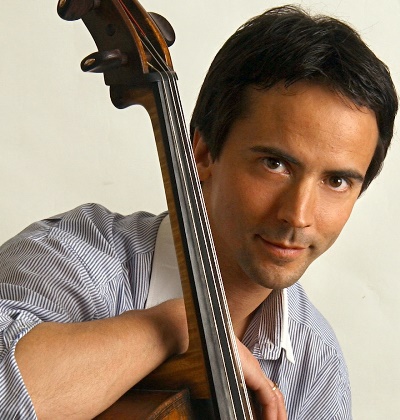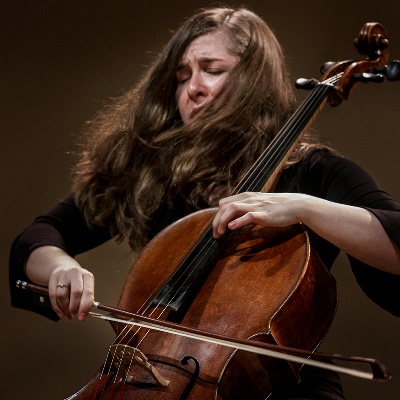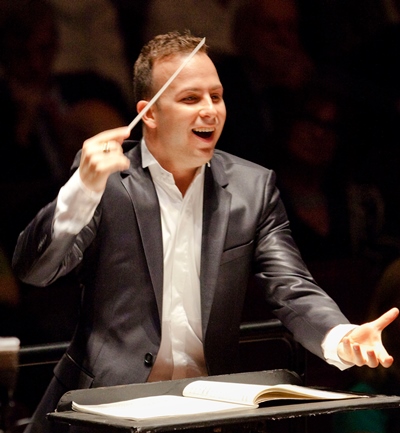New York Aisle: A tale of two cellists, to say nothing of two thirtysomething conductors
 Review: In sterling concerts with the New York Philharmonic and the Philadelphia Orchestra, cellists Alisa Weilerstein and Jean-Guihen Queyras teamed with Krzysztof Urbański and Yannick Nézet-Séguin.
Review: In sterling concerts with the New York Philharmonic and the Philadelphia Orchestra, cellists Alisa Weilerstein and Jean-Guihen Queyras teamed with Krzysztof Urbański and Yannick Nézet-Séguin.
By Lawrence B. Johnson
NEW YORK – It felt like an affirmation of classical music’s near-term future, the double-header of concerts I heard Dec. 5 at Lincoln Center and Carnegie Hall. The experience was redolent of virtuosity, passion and optimism.
 There were two brilliant cellists: New York native Alisa Weilerstein, who at age 32 has won a place among the most distinguished practitioners of her instrument, playing the Dvořák Concerto with the New York Philharmonic; and Jean-Guihen Queyras, a 47-year-old Frenchman whose American profile should be much greater than it is, playing Haydn’s effervescent C major Cello Concerto with the Philadelphia Orchestra at Carnegie Hall.
There were two brilliant cellists: New York native Alisa Weilerstein, who at age 32 has won a place among the most distinguished practitioners of her instrument, playing the Dvořák Concerto with the New York Philharmonic; and Jean-Guihen Queyras, a 47-year-old Frenchman whose American profile should be much greater than it is, playing Haydn’s effervescent C major Cello Concerto with the Philadelphia Orchestra at Carnegie Hall.
Yet no less remarkable were two thirtysomething conductors: the Polish Krzysztof Urbański, music director of the Indianapolis Symphony, making his New York Philharmonic debut, and Montreal-born Yannick Nézet-Séguin, music director of the Philadelphia Orchestra, presiding over those forces at Carnegie.
By the end of the day, the question at the top of my mind was what exposure any of these wonderful musicians have had in Chicago – that is, with the Chicago Symphony Orchestra. The answer: Weilerstein has soloed with the CSO, but Queyras has not; Urbański conducted the CSO at Ravinia last summer (Dvořák “New World”) but has yet to appear on a subscription program at Orchestra Hall, and Nézet-Séguin has not conducted the CSO, though he will lead the Rotterdam Philharmonic – of which he is also music director — on a tour stop at Orchestra Hall with pianist Hélène Grimaud on Feb. 20, 2015.
 The two cellists presented a striking contrast of styles, underscored by the radically different nature of the concertos they played. Weilerstein’s performance of the Dvořák at Avery Fisher Hall left the impression of a musician who is a poet to the core. Here was playing of lyrical ease, expressed in ruminative, radiant phrases and burnished sound. Here also was trust in the music, in its epic narrative and timeless spirituality. As for technical issues, Weilerstein simply transcended any such concerns.
The two cellists presented a striking contrast of styles, underscored by the radically different nature of the concertos they played. Weilerstein’s performance of the Dvořák at Avery Fisher Hall left the impression of a musician who is a poet to the core. Here was playing of lyrical ease, expressed in ruminative, radiant phrases and burnished sound. Here also was trust in the music, in its epic narrative and timeless spirituality. As for technical issues, Weilerstein simply transcended any such concerns.
A few hours later, Queyras – whose lean, youthful aspect utterly belies his middle age – plunged into Haydn’s Baroque-accented Cello Concerto in C major with a fetching mix of wit and unassailable virtuosity. The work’s prodigiously decorated finale allowed the cellist to indulge in sweeping flights of sheer bravura, which he did with a manifest – and indeed infectious – joy.
Despite their different times and locales, the two cellists found common ground in their encores – Weilerstein offering the Sarabande from Bach’s Third Cello Suite and Queyras the Sarabande from the Fourth Suite. Where Weilerstein invested her Bach with gossamer lightness, Queyras struck a darker, more muscular tone. Both drew boisterous ovations from listeners happy to hear just a bit more from each soloist.
 As for the conductors, 32-year-old Urbański – standing in for the indisposed Christoph von Dohnanyi – led the New York Philharmonic in an all-Dvorak program including the Seventh Symphony, and Nézet-Séguin, 39, directed the Philadelphians through an intriguingly constructed concert that began with Brahms’ Third Symphony, complemented after intermission by the Haydn concerto and Strauss’ “Rosenkavalier” Suite.
As for the conductors, 32-year-old Urbański – standing in for the indisposed Christoph von Dohnanyi – led the New York Philharmonic in an all-Dvorak program including the Seventh Symphony, and Nézet-Séguin, 39, directed the Philadelphians through an intriguingly constructed concert that began with Brahms’ Third Symphony, complemented after intermission by the Haydn concerto and Strauss’ “Rosenkavalier” Suite.
Nézet-Séguin’s Brahms combined incisive rhythms and clear structure with an opulence that arguably befit a work shaped by both Classical and Romantic influences. The Philadelphia Orchestra acquitted itself not only with precision but with that luster its very name invokes. Speaking of which, the concert’s Straussian capstone of music from “Rosenkavlier,” sensuous and lush, sent the mind reeling back to the grand old days of Eugene Ormandy.
 Among these four highly individual and appealing artists, it was the steady, methodical, deceptively dynamic Urbański whose performance especially stuck with me as a promise of special things to come. This youthful conductor, already famous for eschewing scores on the podium, takes a direct, efficient approach to his work that recalls both Sir Georg Solti and Esa-Pekka Salonen – not least in the subtle musical results that come almost unexpectedly form the rather clinical visual impression.
Among these four highly individual and appealing artists, it was the steady, methodical, deceptively dynamic Urbański whose performance especially stuck with me as a promise of special things to come. This youthful conductor, already famous for eschewing scores on the podium, takes a direct, efficient approach to his work that recalls both Sir Georg Solti and Esa-Pekka Salonen – not least in the subtle musical results that come almost unexpectedly form the rather clinical visual impression.
Urbański’s expansive, rhythmically animated Dvořák Seventh Symphony was an understated thriller – unforced, sunny and quite irresistible in its folksy gentleness. The New York Philharmonic responded with a warm-hearted performance that captured the profound humanity of what well may be Dvorak’s greatest music for orchestra.
No doubt the coming seasons will see the impressive Polish maestro making his Orchestra Hall debut with the Chicago Symphony. His Dvořák would be an excellent calling card.
Related Links:
- New York Philharmonic season calendar: Find it here
- Carnegie Hall season calendar: Find it here
- Alisa Weilerstein’s tour schedule: Read it here
- Jean Guihen Queyras tour schedule: Read it here
Tags: Alisa Weilerstein, Carnegie Hall, Jean-Guihen Queyras, Krzysztof Urbański, New York Philharmonic, Philadelphia Orchestra, Yannick Nézet-Séguin

